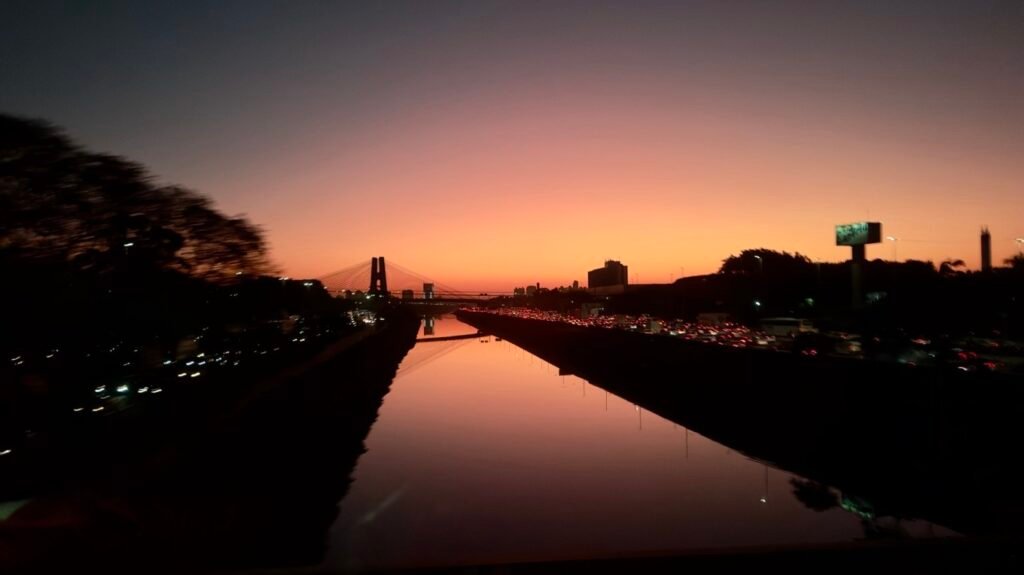
The world is home to many nations, each giving rise to distinct languages. These languages reflect the evolution of history and the inheritance of culture, offering insight into the vibrant human customs and the varied religious beliefs that shape different regions.
Portuguese, known as Português, is a Romance language spoken in countries such as Brazil, Portugal, Angola, Mozambique, Cape Verde, São Tomé and Príncipe, Guinea-Bissau, East Timor, and Macau in China. Today, it is used by more than 300 million people. However, what many might not know is that Portuguese is divided into two variations: one used in Brazil, known as Brazilian Portuguese, and the other in Portugal, known as European Portuguese. These two versions have slight differences in pronunciation and spelling.
São Paulo, the capital of São Paulo state in Brazil, is the largest city in the country and the most populous and prosperous metropolis in Latin America. At the same time, it is also considered one of the most dangerous cities. Before my first visit to Brazil, I did extensive research and found many reports emphasizing government corruption and social instability, which left me feeling a bit anxious about my trip. To feel more at ease, I booked an Airbnb in advance and arranged for the host to pick me up from the airport. This turned out to be the right choice. During the drive to the apartment, I had a long conversation with the host, which gave me deeper insight into São Paulo.
São Paulo offers many attractions in terms of scenery, people, and cuisine, leaving visitors enchanted. Among the many highlights, I highly recommend São Paulo Cathedral and the São Paulo Museum of Art. The cathedral, located in the old part of the city, is a blend of Gothic architecture and Renaissance influences, with an elegant interior supported by irregular white brick pillars. However, it is essential to stay cautious when visiting, as the area is crowded with homeless people and drug users. It is best to avoid using your phone or carrying valuables for too long while exploring this area.
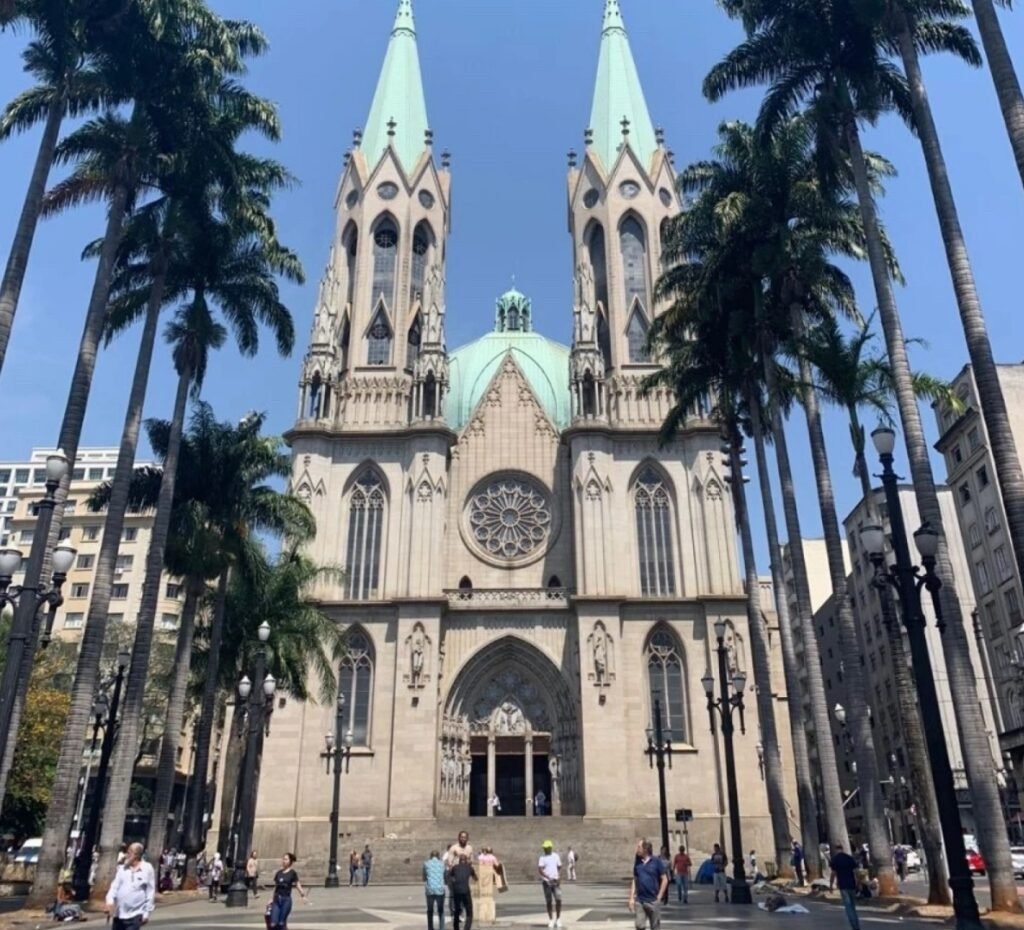

The São Paulo Museum of Art is located in the heart of São Paulo’s bustling streets. Its architecture is highly distinctive, designed by Architect Lina Bo Bardi. Inside, the exhibits are arranged on glass panels, creating the illusion that the artworks are floating in mid-air. This unique layout allows visitors to engage closely with the art, offering a glimpse into various historical perspectives through these accessible pieces.


Compared to beautiful landscapes, food holds a greater allure for me. In Brazil, two culinary delights stand out: Brazilian barbecue (Churrasco) and Japanese sushi.
Brazilian barbecue can be found on every corner of São Paulo, with Fogo de Chão being one of the most famous churrasco chains. Upon entering the restaurant, the manager provides each guest with a double-sided red and green card. Skilled grill masters prepare the meats without any seasoning, only sprinkling coarse salt after grilling. Servers then bring the freshly grilled meats to the table and carve them according to your preference. When you’re full, remember to flip the card to the “stop” side to indicate that you no longer wish to receive more food. For a refreshing twist, try pairing your meal with a Sprite or Coke mixed with a slice of lemon.
Another must-try national dish is Feijoada, a hearty black bean stew. This dish dates back to the Portuguese colonial era, when enslaved people would gather discarded parts of pigs, such as feet, ears, tails, and sausages, and cook them together with black beans. Over time, Feijoada evolved into one of Brazil’s most beloved national dishes.


In Brazil, the largest immigrant community is Japanese, many of whom are involved in the restaurant industry. This is one reason I rediscovered my love for sushi after arriving here. The fresh, beautifully marbled salmon, dipped in wasabi, delivers an intense burst of flavor that excites the palate.
I highly recommend Sushi Isão, located near the city center. Upon entering, the staff greet you with a warm welcome in Japanese. Their precise fish-cutting skills and the wide variety of fish make every bite a delight. Paired with a bowl of fresh tofu and fish soup, the experience is simply extraordinary. The best part? You can eat as much as you want until you’re fully satisfied.


São Paulo Independence Park
This park is absolutely gorgeous, filled with unique buildings and art galleries. There are lots of performance art exhibits here, like a real wooden ship that stands out and represents São Paulo’s maritime culture

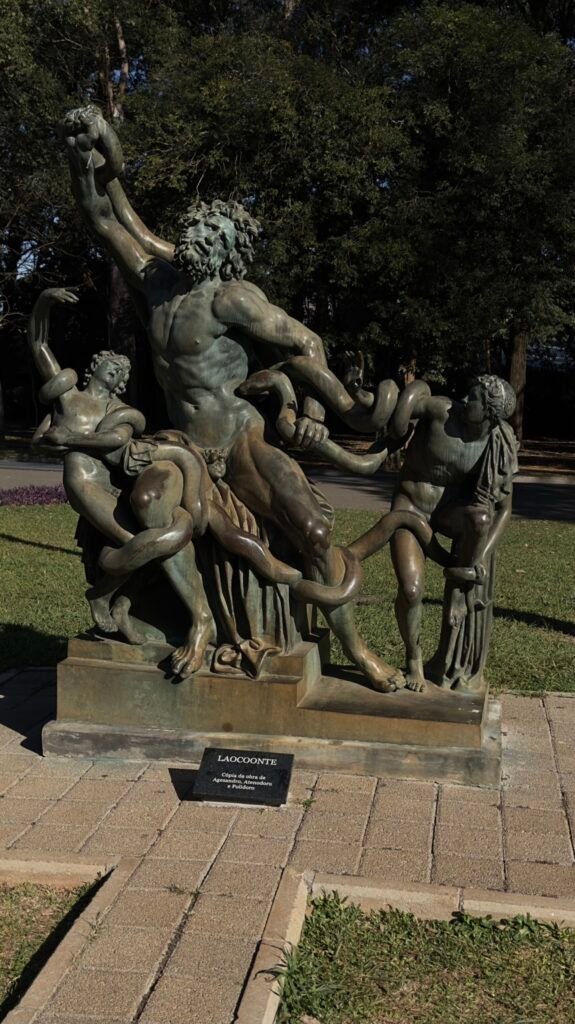
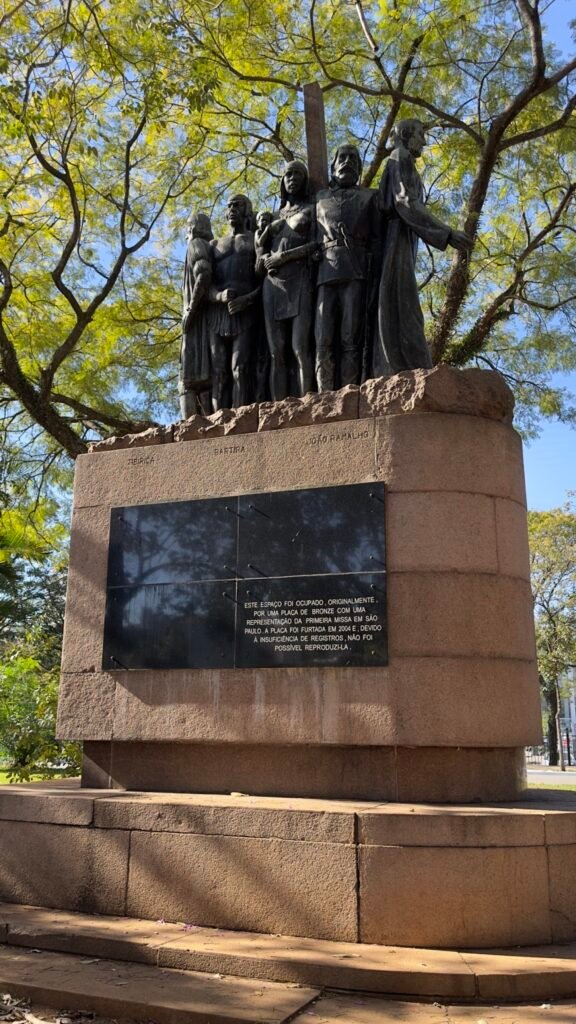
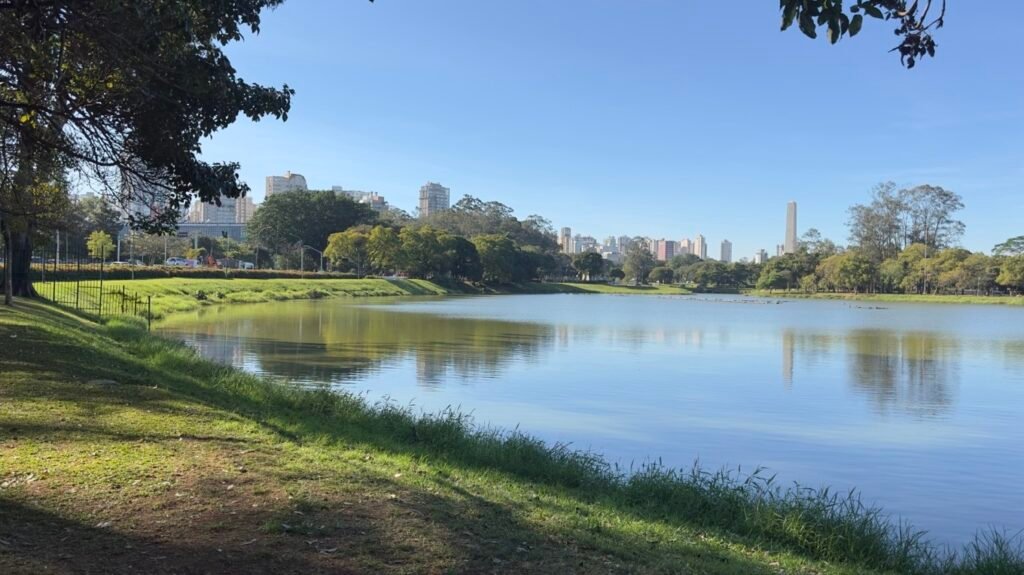
When you arrive in São Paulo, the first thing that hits you is the massive, over-the-top graffiti murals everywhere. This city is a major birthplace of street art, where a bridge or a building becomes a huge canvas. Whether you’re looking from afar or up close, it’s truly impressive.
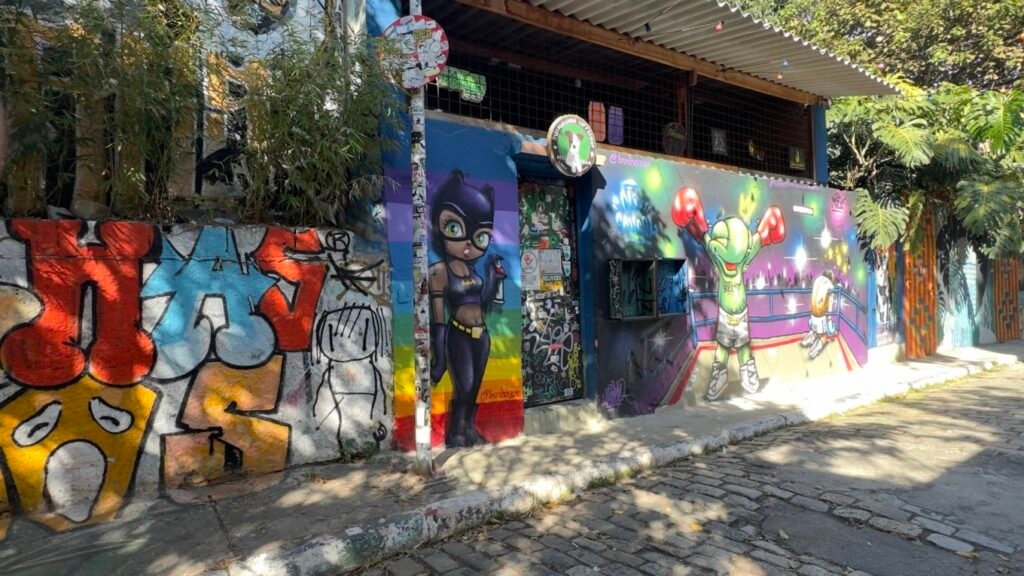
Batman Alley is a perfect example of Brazil’s street art style. The entire alley is lined with walls covered in stunning, diverse graffiti. Each piece has its own unique vibe, showcasing different artistic styles.
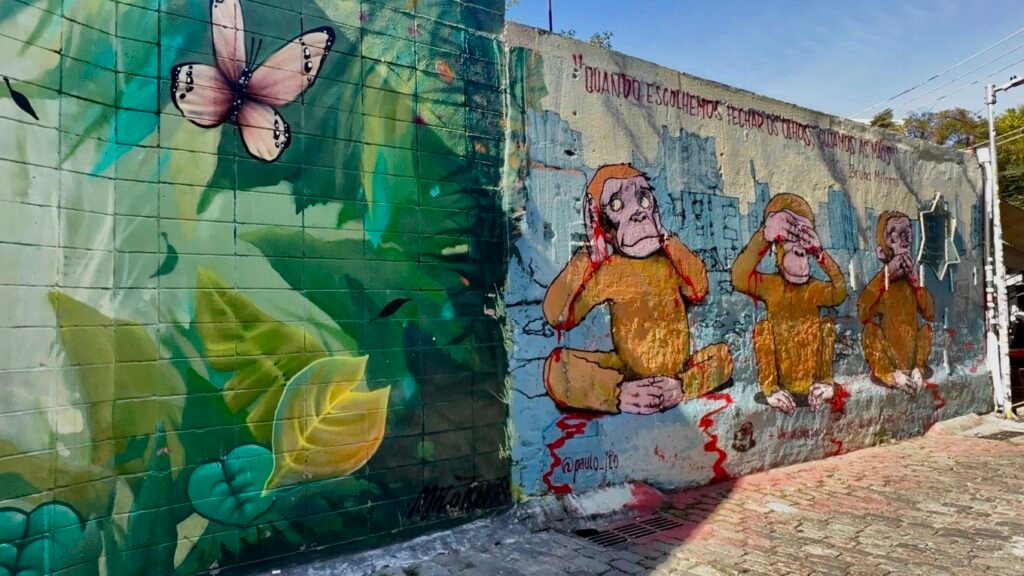
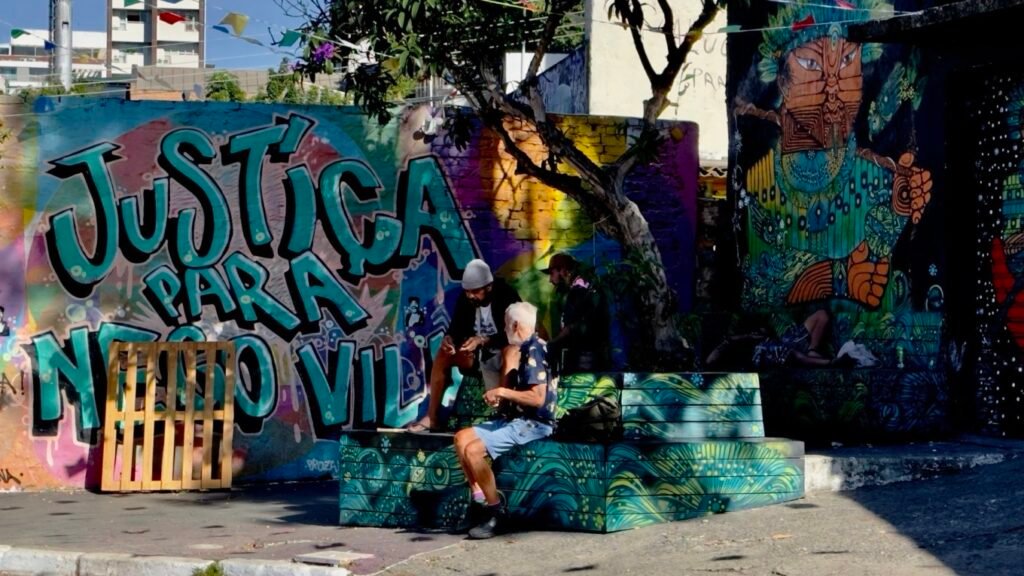
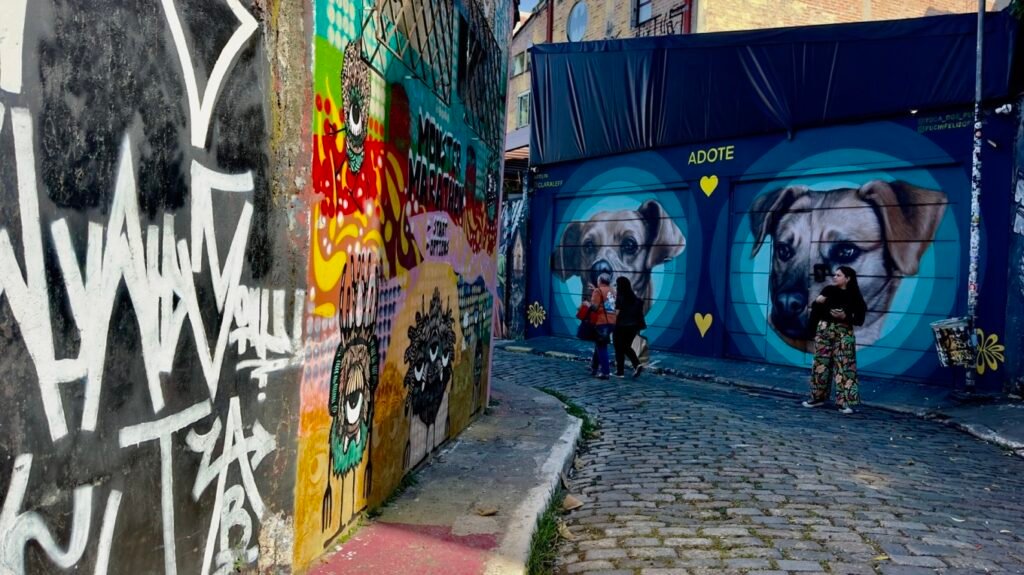
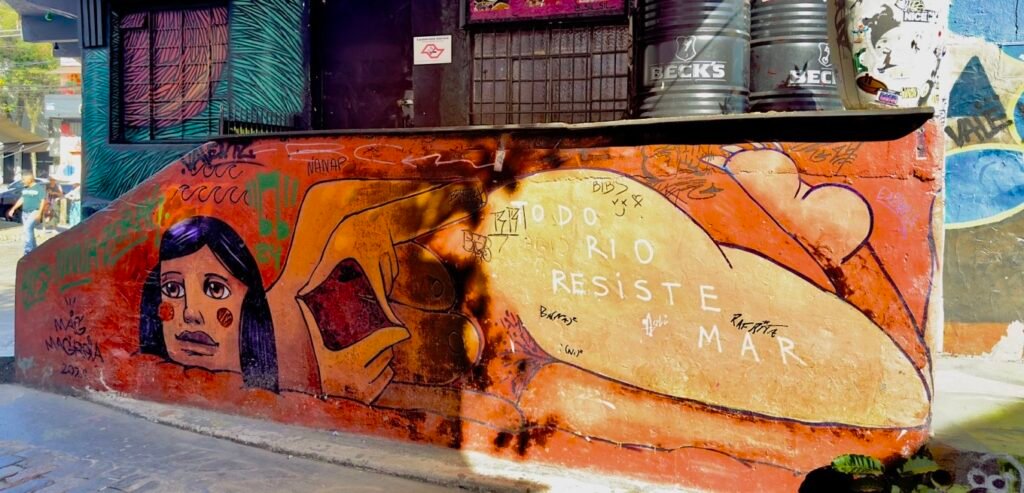
Graffiti is actually supported by the local government and has become a cultural symbol of the city. Standing in front of these wildly imaginative murals, you can really feel the creativity and limitless imagination that goes into this art form.
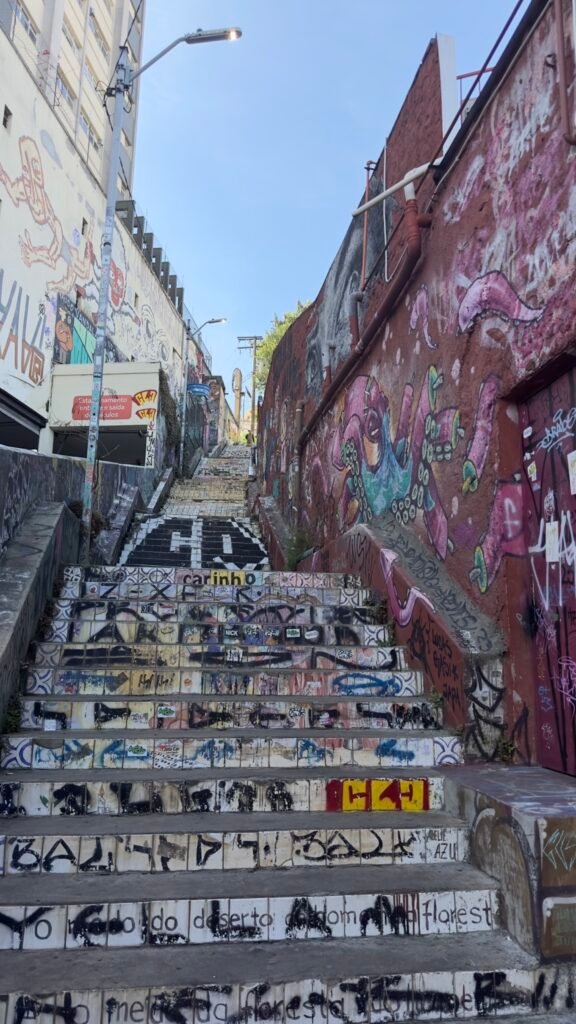
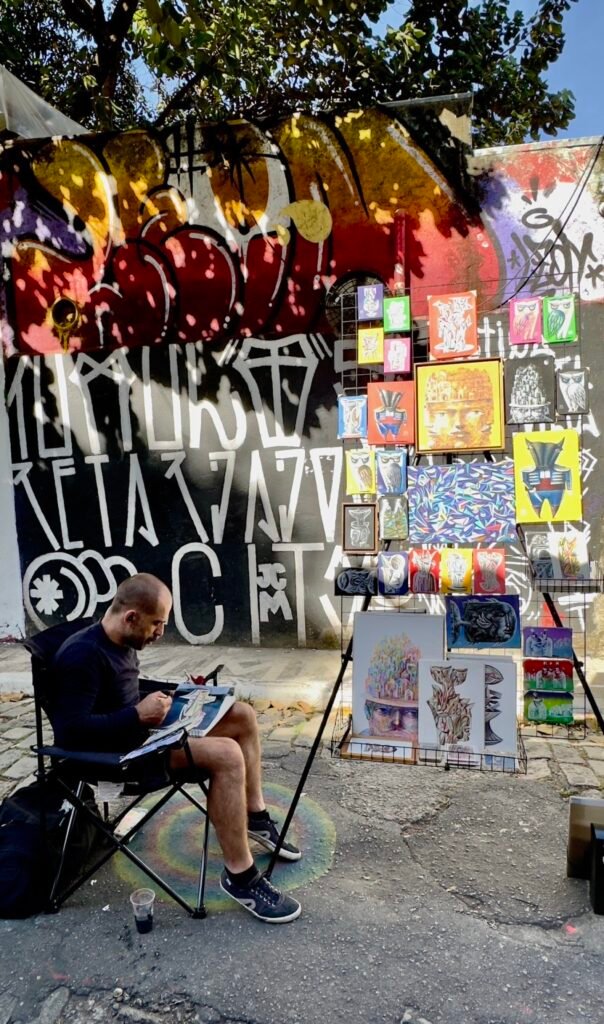
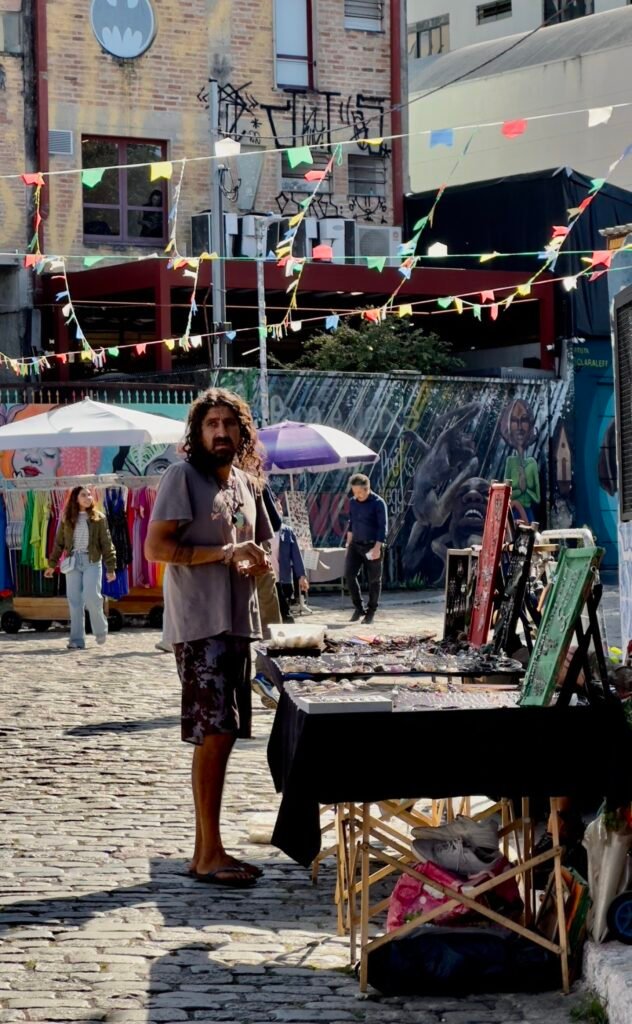
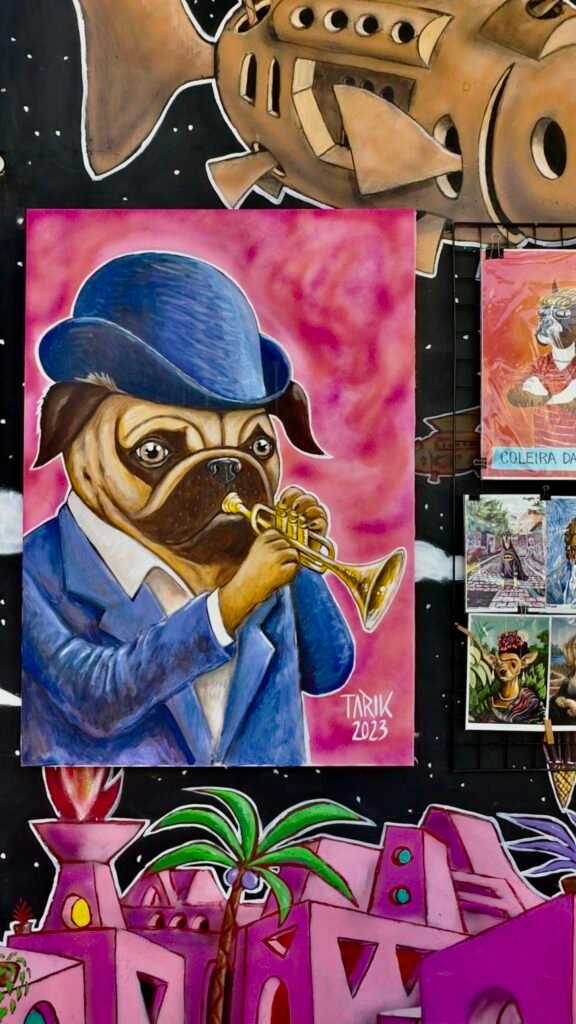
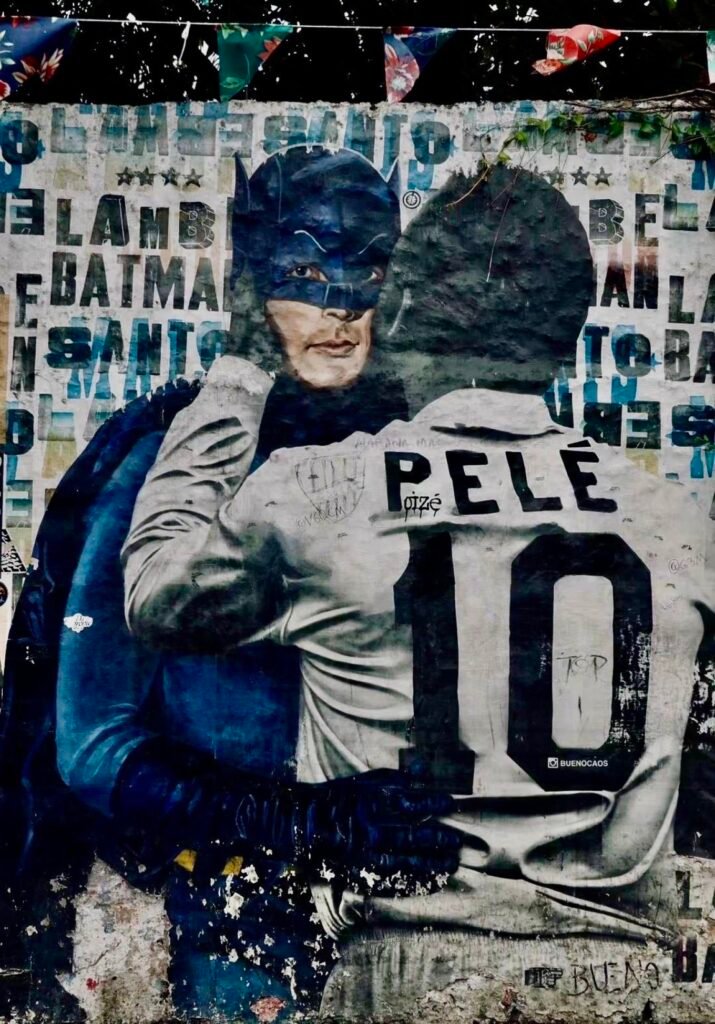
A lot of people came here just to see that iconic mural of Argentina’s soccer legend Maradona and Brazil’s Pelé sharing a hug. It quickly turned this spot into a must-visit destination for anyone looking to snap a photo for their social media feed.
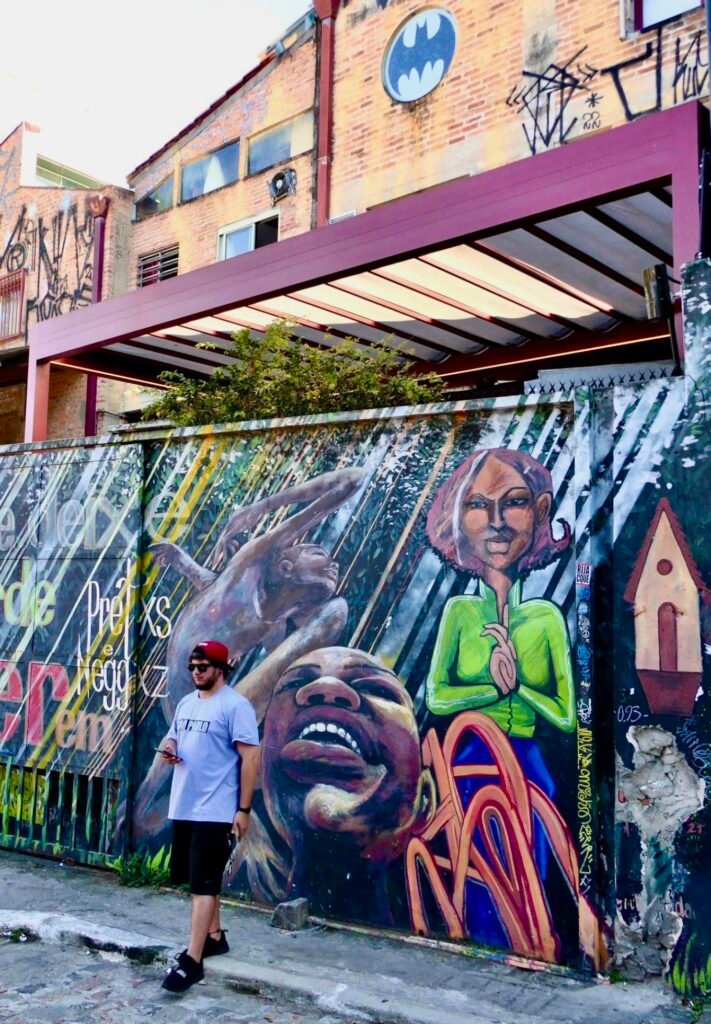
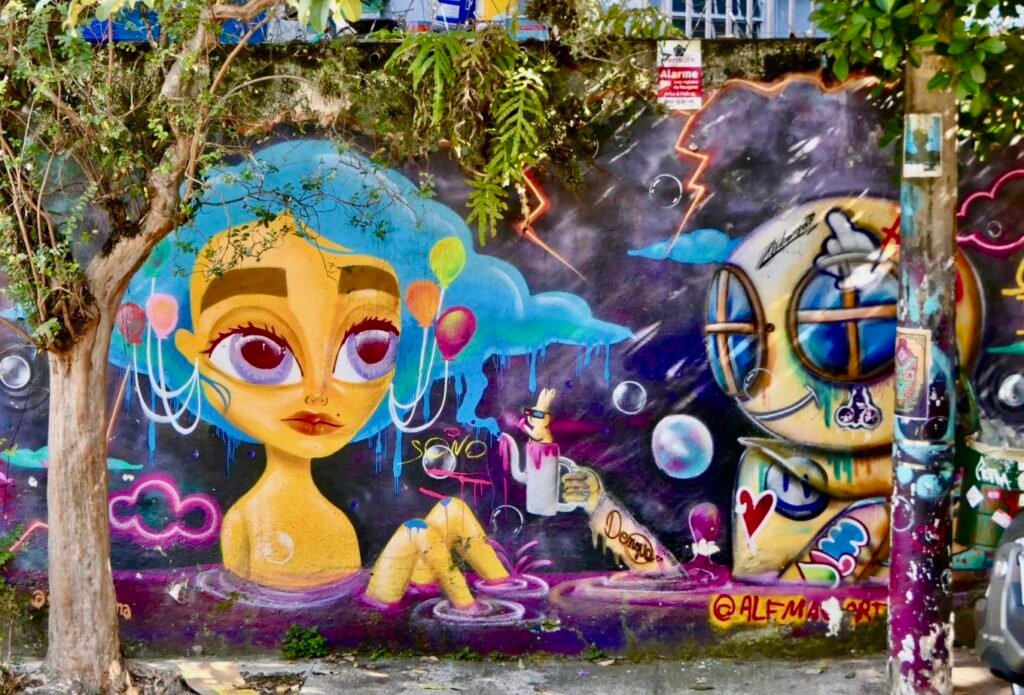
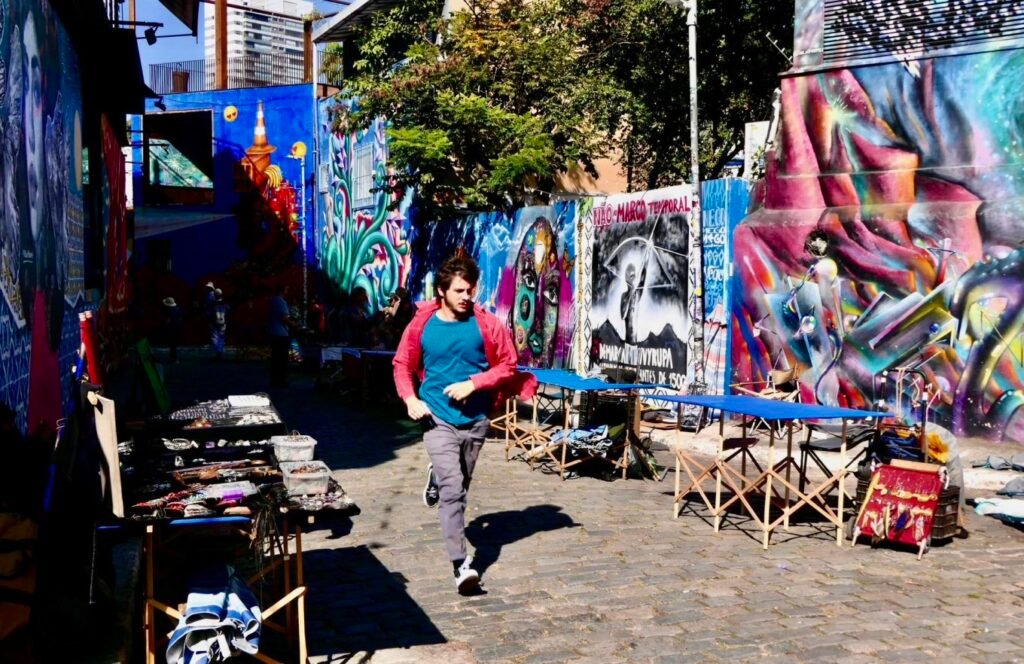
The first set of images, from Figures 1 to 4, showcases a mural on the exterior wall of the Museum of Modern Art (MAM) located in Ibirapuera Park (Parque Ibirapuera). This mural was created by the graffiti artist brothers Otávio Pandolfo and Gustavo Pandolfo, known collectively by their artistic name Os Gêmeos (which means “The Twins”).
Their artwork blends elements of Brazilian folklore, hip-hop culture, personal experiences, and political commentary. This particular piece also carries hints of influence from the works of medieval painter Bosch, creating a bright, intricate, and playful visual universe that invites viewers to immerse themselves and appreciate its layers of meaning.


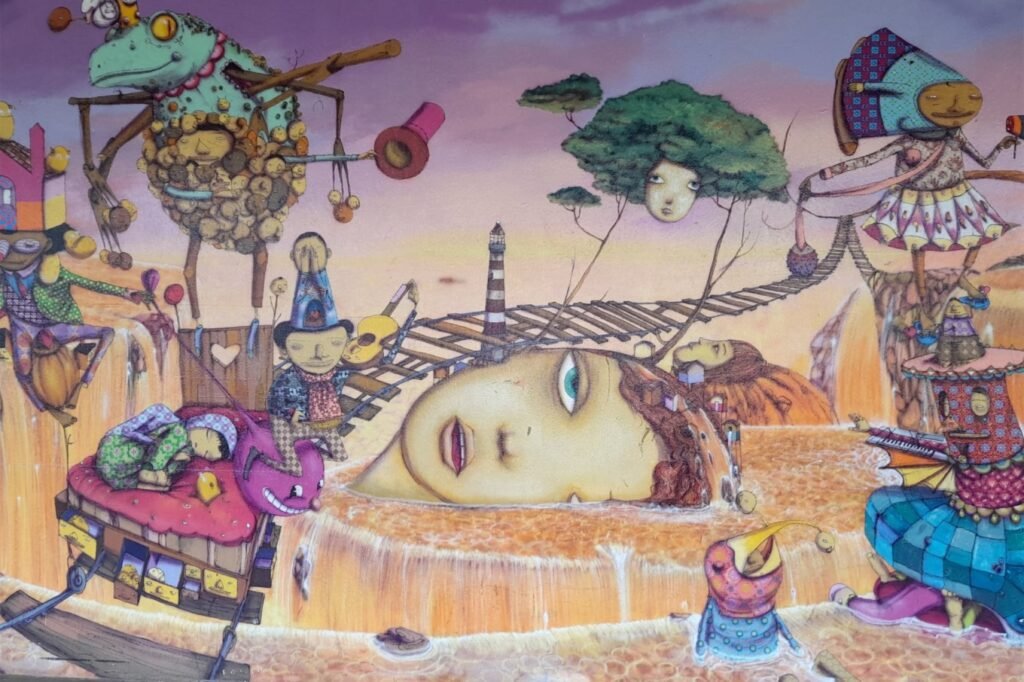
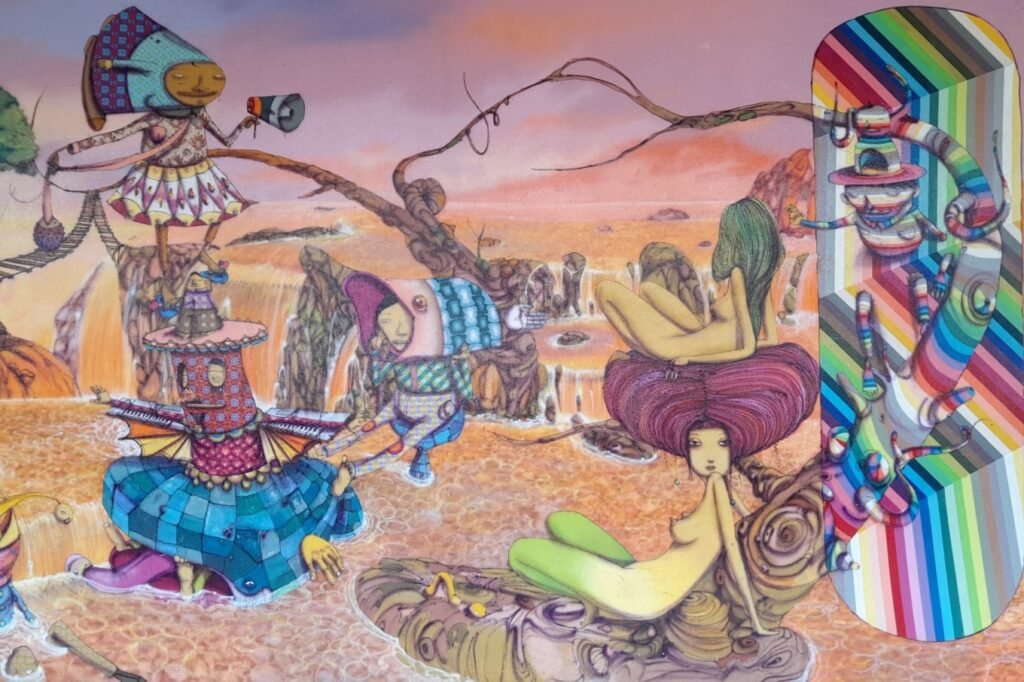
The second mural was photographed near the Bela Vista district, a traditional Italian neighborhood in downtown São Paulo. Since the 19th century, a large influx of Italian immigrants has shaped the city’s cultural landscape.
This graffiti depicts a group of people on the street, including figures with animal heads and monsters. It appears to portray a scene where several sinister-looking characters are robbing a man with a baboon-like face, attempting to snatch his bag. However, the cartoonish artistic style used to represent this chaotic scene gives it a playful and intriguing quality, making it more amusing than unsettling.


The third mural was photographed behind the iconic São Paulo Museum of Art (MASP). The painting features some peculiar and whimsical figures, giving a sense of familiarity, as if seen somewhere before. In 2019, Nike commissioned several urban artists from São Paulo to create promotional graffiti for their Air Max sneaker series. This mural is part of that project, though the section featuring the shoe is partially obscured by vegetation, making it hard to see clearly.
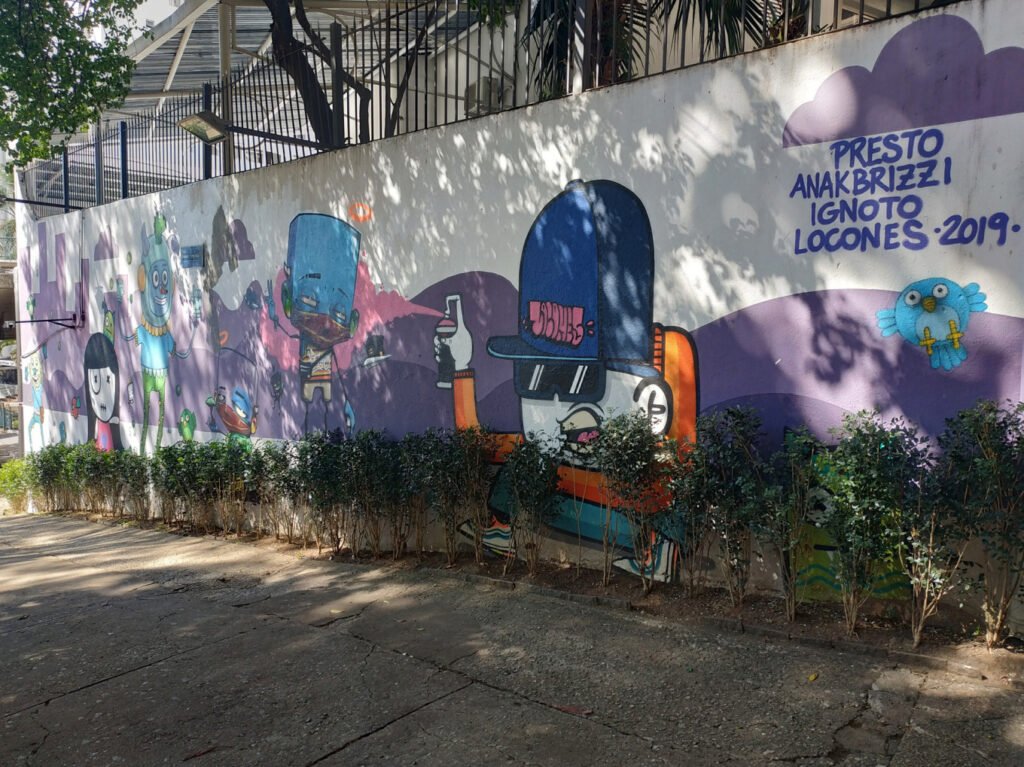

São Paulo is a city shaped by multiculturalism. The influx of immigrants from various countries and regions has created a vibrant community where people bring their own languages, cultures, and traditions. This fusion of diverse influences makes São Paulo a dynamic and inclusive city, offering a profound sense of cultural richness and variety.


